Four years ago, I threw out the question: “What is the best bottle cutter on the market?” A lot of readers weighed in. Some gave recommendations for their favorite glass bottle cutter, others just wanted a definitive answer, which is what I wanted. Finally, FINALLY, we decided to get to the bottom of the bottle cutter question and have a product shoot out between four popular models. Our competition has not been without a little drama, as one of the bottle cutter makers has, apparently, gone out of business since the inception of this review. That being the Bindu Studio’s Bottle Cutter. We’ve decided to leave the Bindu in the review just in case some of you stumble upon one secondhand. That being said, it’s time to introduce each of our competitors (and their final grades):
- Creator’s Bottle Cutter (A): Buy on Amazon
- Ephrem’s Bottle Cutter Kit (A+): Buy on Amazon
- Diamond Tech Crafts G2 Bottle Cutter (D)
- Bindu (B): $50 original retail price. (No longer available to buy new…)
Diamond Tech Craft G2 Glass Bottle Cutter
First to go under the magnifying glass is the Diamond Tech Craft G2 Bottle Cutter, or G2 for short. For such a simple contraption, its assembly was not very intuitive. I would describe it as ‘fussy.’ By far, it took the longest to assemble of all of our competitors.
Besides the individual pieces, the G2 came with a ‘clinker’ to insert inside bottles to help their separation by ‘tapping’ them. This is not something I’d recommend, even with a tapper on hand! It also came with 2 pieces of emery cloth and one cutting head.
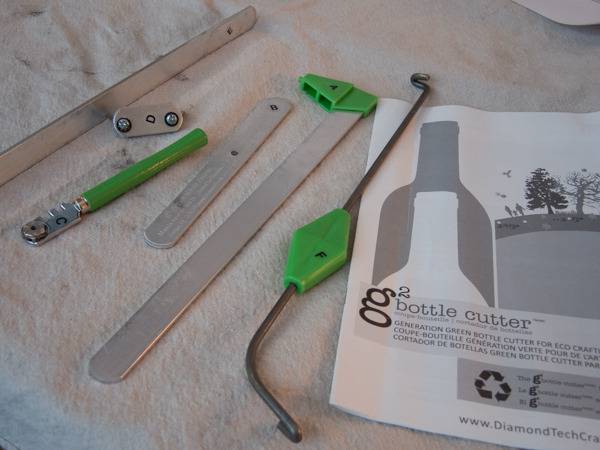
Eventually, the assembly was finished:
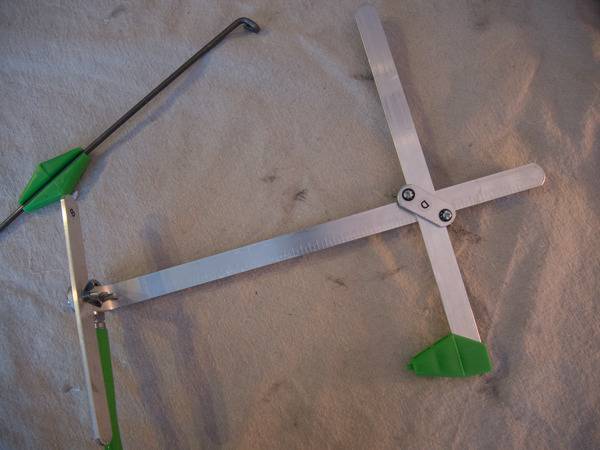
Setting it up to score was easier than I thought it was going to be. All it took was a few adjustments of the upper arm and lower arm to get the device perpendicular to the bottle, which is imperative to get a proper score.
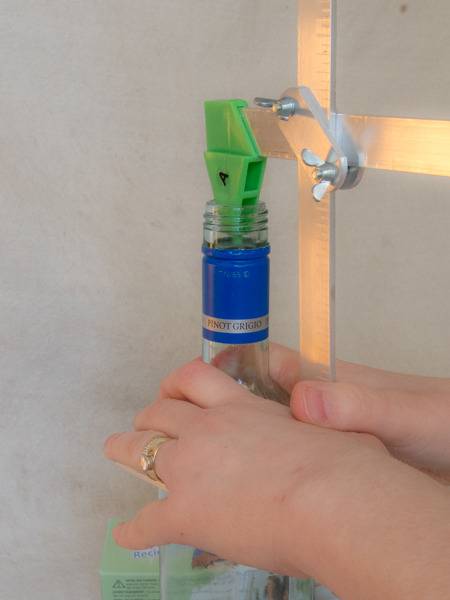
The setup resulted in a very nice looking, even cut:
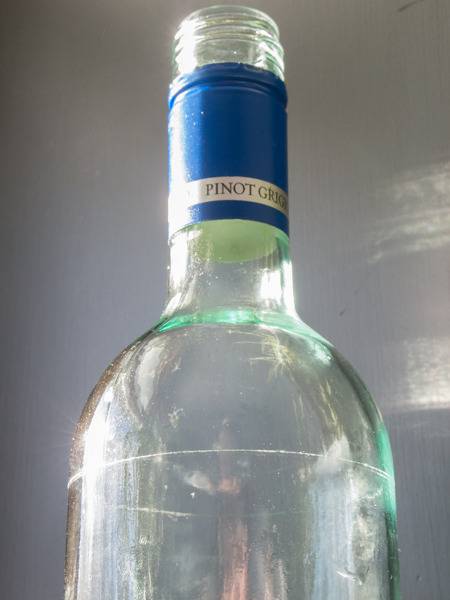
I used the hot then cold water bath means of separation, which the instructions for the G2 recommends, and it was a huge fail.
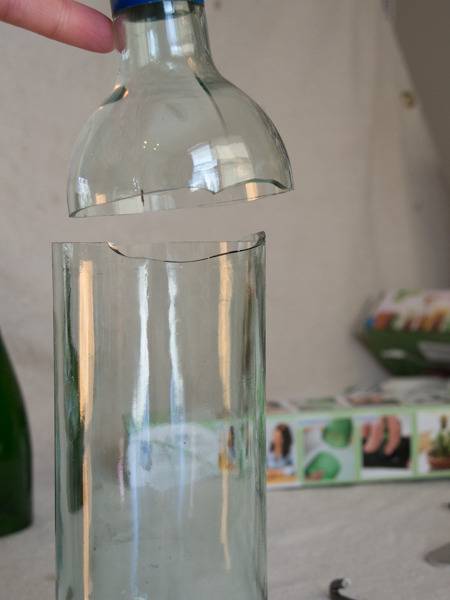
I tried a second time and achieved another nice cut:
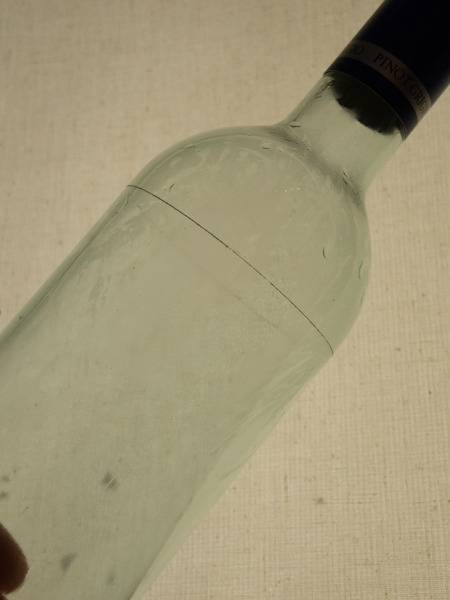
But it resulted in another bad break:
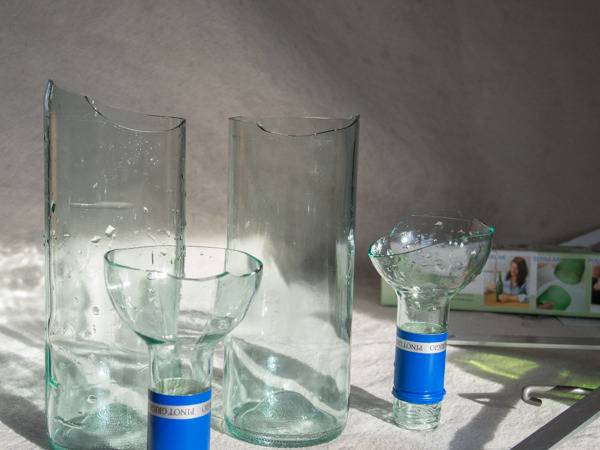
Would the 3rd time, with a different type of bottle, be the charm?
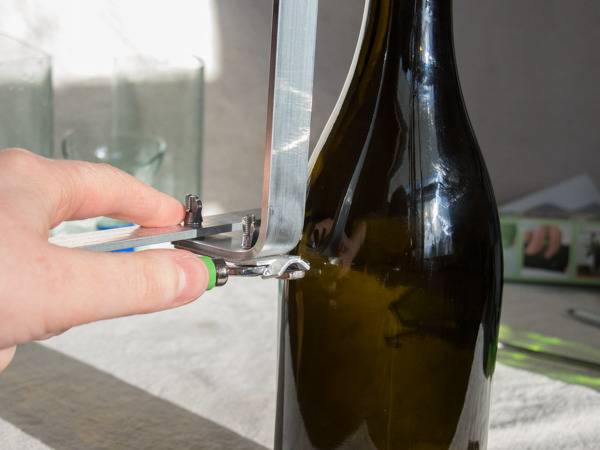
Nope. In this case multiple hot/cold baths didn’t separate the bottle, so I tried the candle flame/cold water method. Still no separation.
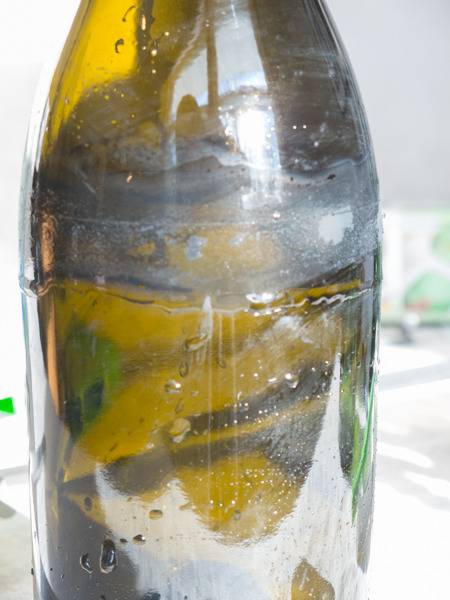
Okay, if the 4th attempt didn’t work, I was going to give up. As it turned out, I got a perfect cut with hot/cold water separation:
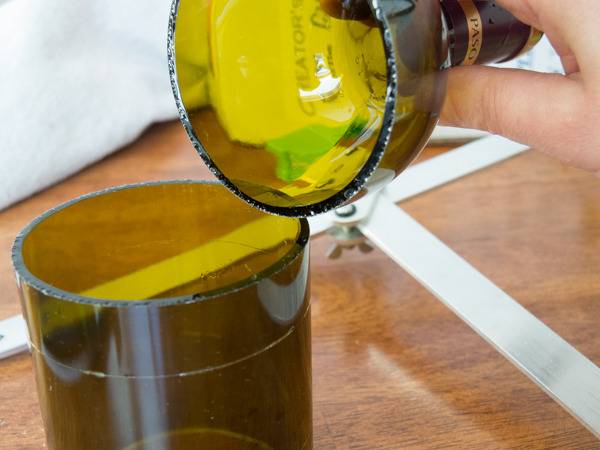
Because of the design of the G2, bottles with wide mouths require their lids to be intact. That’s because you have to punch a hole in the lid to slip the top of the cutter into. I gave that a try with a frappuccino bottle, with bad results. This is because it’s very difficult to punch a smooth hole into the exact center of a metal lid. Not doing so means a wavy score line:
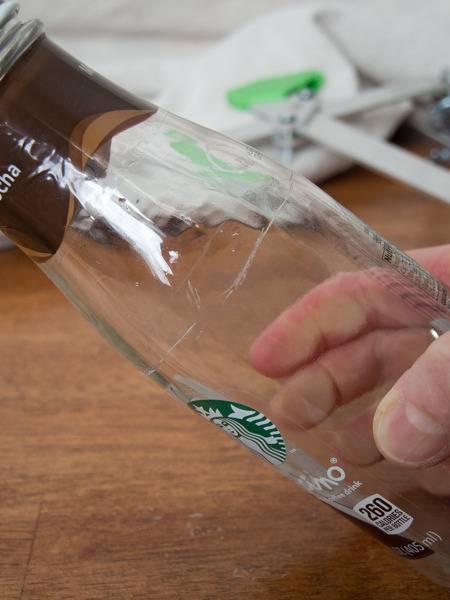
And then, after all that jockeying with top of the cutter and trying to keep it stable, this happened (I glued it back together and forged ahead):
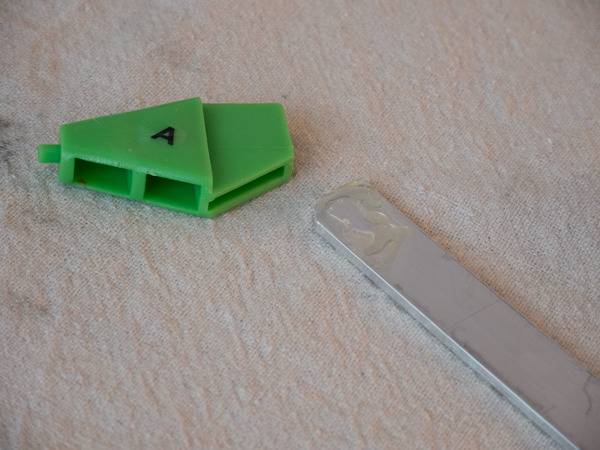
Now, the G2’s instructions say that it can cut a bottle on its rounded edges, so I thought I’d give it a try. This is where all those fussy adjustments came in handy. First, I tried it on the neck:
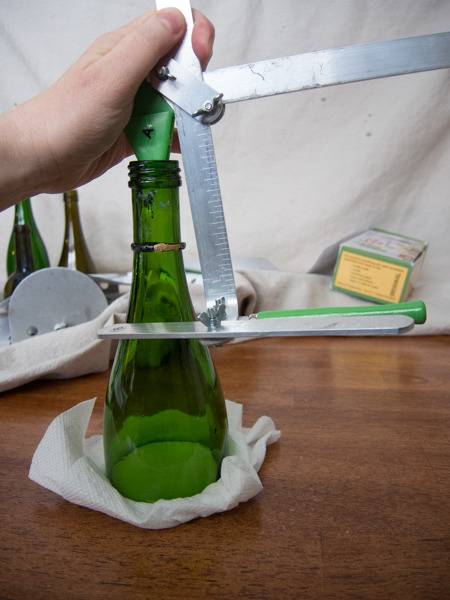
I got a nice cut, but the separation was a huge failure:
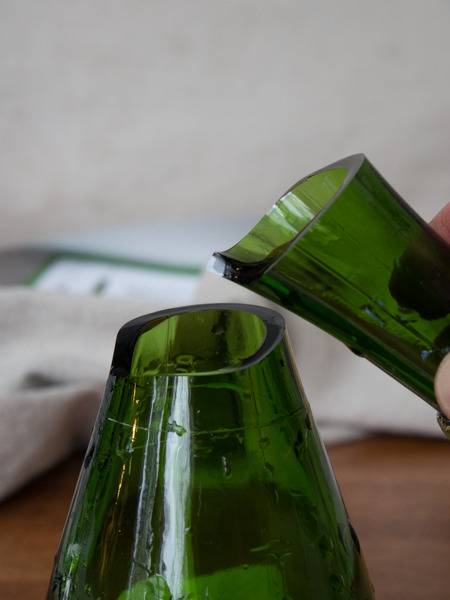
That last one was a thick champagne bottle, so I thought I’d try something thinner. In this case, a Bloody Mary Mix bottle:
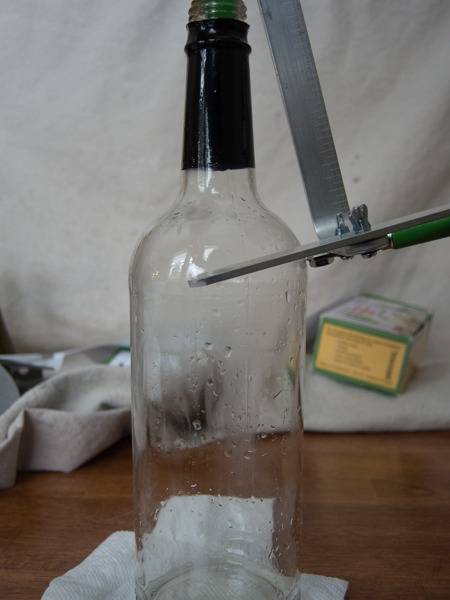
Again, I got a nice cut, and a nearly successful separation. At this point, it was time to move on to our next competitor.
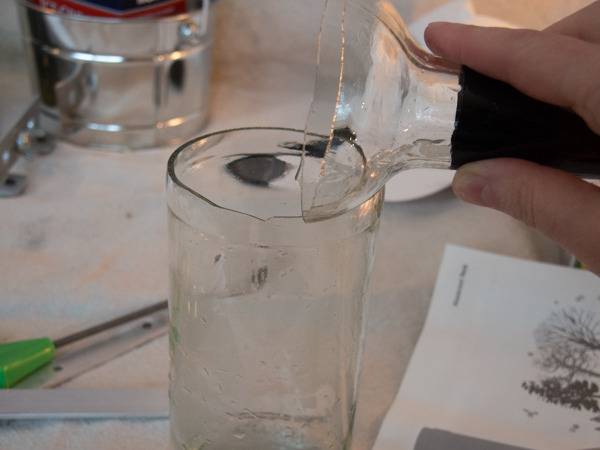
Read It!: Bottle Art: Reduce Reuse Recycle
Check out Bottle Art: Dazzling Craft Projects from Upcycled Glass for great bottle cutting project ideas!
The Bindu Glass Bottle Cutter
The Bindu. It came with a LOT of parts to assemble and although it was a bit time consuming, it went together easily:
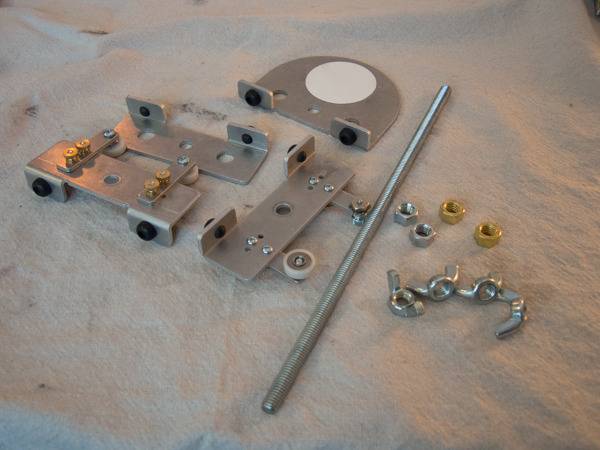
What impressed me about it was its solid construction. Steel threaded rod, wing nuts, and hex nuts; 1/8 aluminum brackets; rubber feet, and nylon (or possibly UHMW) rollers all added up to a hefty unit. Also, the cutting head on the Bindu has 6 (!) numbered cutting wheels, so you can keep track of which ones you’ve used when the old one gets dull.
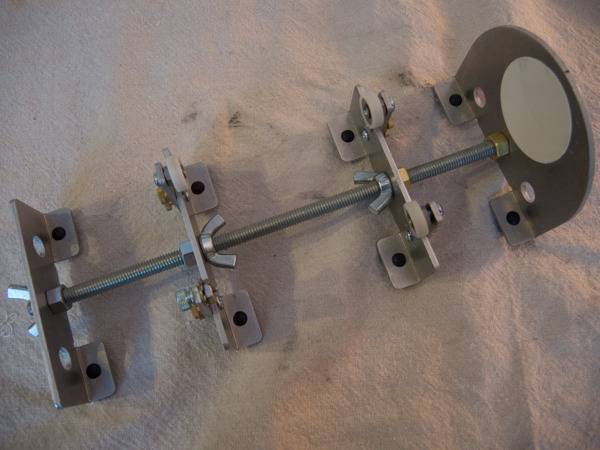
Setting up the Bindu for scoring was a no-brainer. Just adjust the bracket with the cutting wheel to the length at which you want to cut your bottle and away you go.
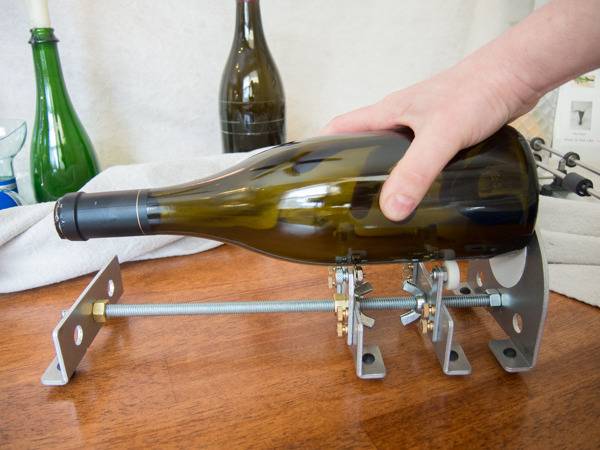
My first attempt resulted in a nice cut:
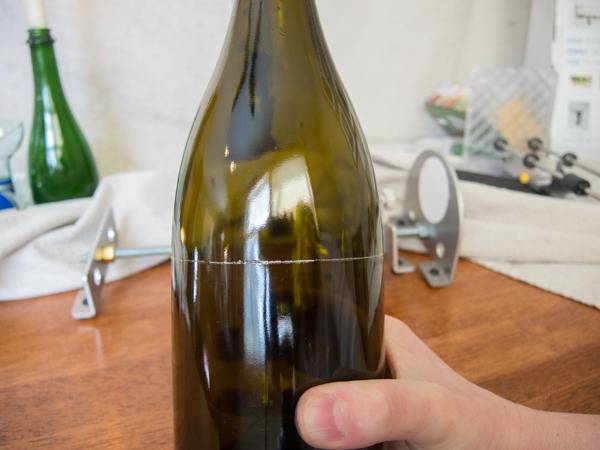
Separation with candle/cold water, as suggested by Bindu’s instructions, wasn’t a total failure, but it wasn’t good either.
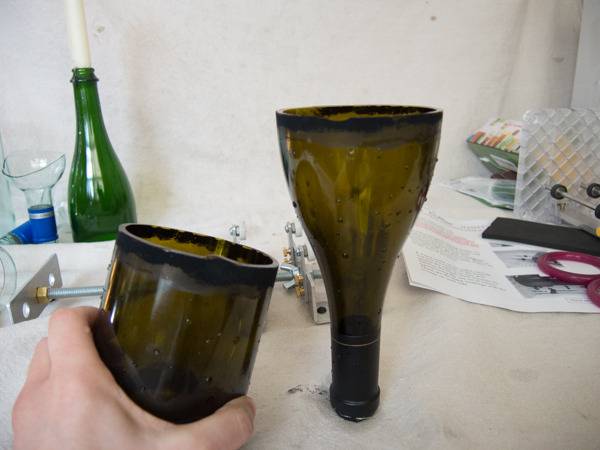
My second attempt was pure perfection (below). As for cutting on a slant like the G2, Bindu’s instructions imply that it may be done if you shim the cutting wheel/turret with washers. The idea is to adjust the angle of the cutting wheel to match the slope of the bottle. Not only does it sound tricky, it sounds like another post! Which is why we’re going to quit while we’re ahead with the Bindu and go on to our next contender.
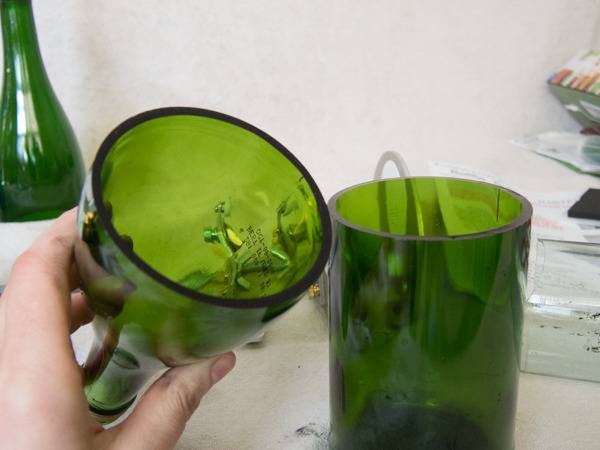
Don’t forget:
CRL Professional Glass Cutter Oil is an ideal lubricant for making clean cuts.
Ephrem’s Bottle Cutter
Honestly, when I took this little thing out the box, I wasn’t terribly impressed. Formed sheet metal and no-wing nuts? Harrumph. Although it DID have 3 cutting wheels, which was nice. Also in the box were a candle, some emory cloth, and a small bottle of sanding compound. (Interesting.) Two of the nylon (or possibly UHMW) guide rollers and shoulder bolts were not attached to the unit. Since there were no assembly instructions, they could have been overlooked before shipment or perhaps they came apart in shipping.
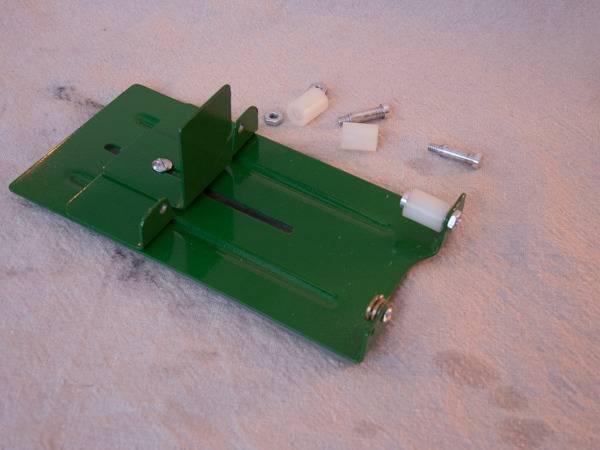
No matter, as it was quite obvious where they went.

The set up for Ephrem’s was pretty easy. It was just a matter of loosening the bracket and adjusting for length. Again, since there was no wing-nut, I needed a pair of pliers and a screw driver to adjust the bracket. (Also note that the adjustment length isn’t that long, so there are limitations of which to be aware. But for most applications, it should be fine.) Now, for my first attempt, and, yes, I used one of the G2 fails:
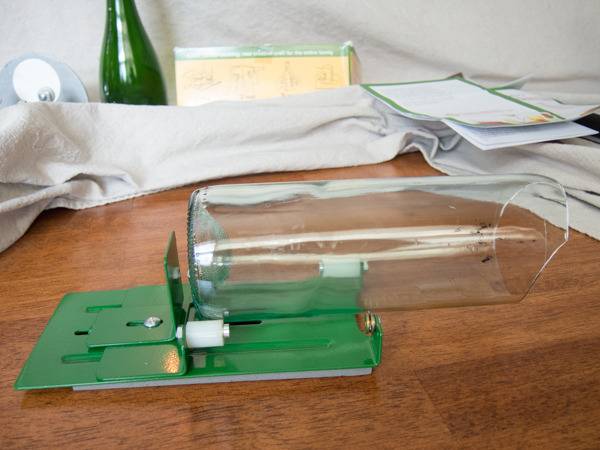
Like its predecessors, I got a nice, even cut:
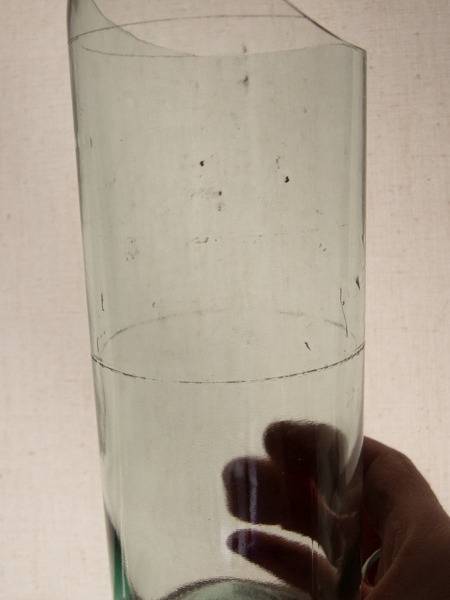
And, will wonders never cease, I achieved perfection on the first try with candle/cold water separation as Ephrem’s suggested! So why success on the first attempt?? I think it might have to do with the squatty nature of the Ephrem’s. The fact that it’s made out of compact, formed sheet metal and there are no wing-nuts to make room for, it can sit close to the ground which means it has really good stability. As far as cutting on a slant? The maker offers an adapter on their website for $6 to make such cuts.
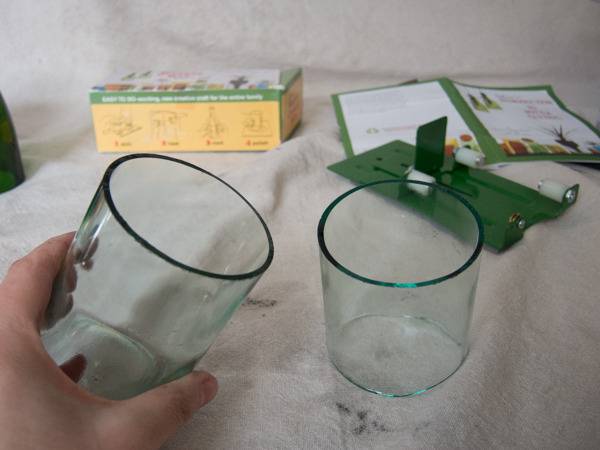
But maybe that first cut was a fluke….
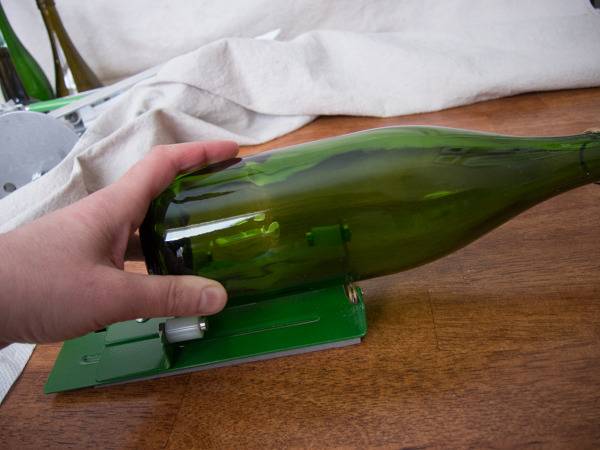
Nope. And look at the size of that bottle! (Champagne, anyone?)

Then, just for fun, I decided to try to salvage the frappuccino bottle fail from last time using Ephrem’s. Again, perfection!
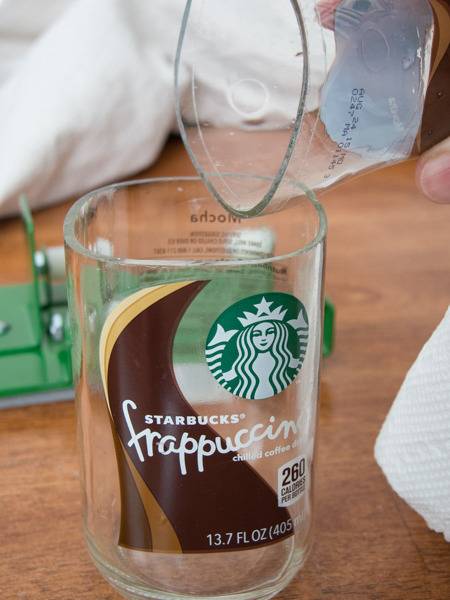
The Creator’s Bottle Cutter
Opening its box was a joy. NO assembly! As for my first impressions of the unit itself, it was obvious that a lot of thought had gone into its design and construction. This is what a 100 dollar bottle cutter gets you: injected molded ends with honeycomb for rigidity, 1/4″ steel shafting, rubber-coated steel ball bearings, an aluminum backbone with integrated ruler, and very ‘grippy’ silicone feet. Oh, and a mark on the top of the backstop so you can gauge when your bottle has made a 360 degree rotation. (Very thoughtful.) It also comes with 2 rubber rings, which you’ll see later, to direct hot and cold water for hot and cold water separation.
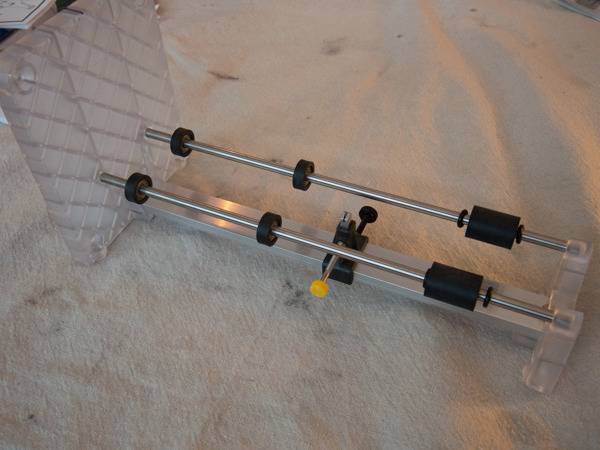
A shot of the integrated ruler:
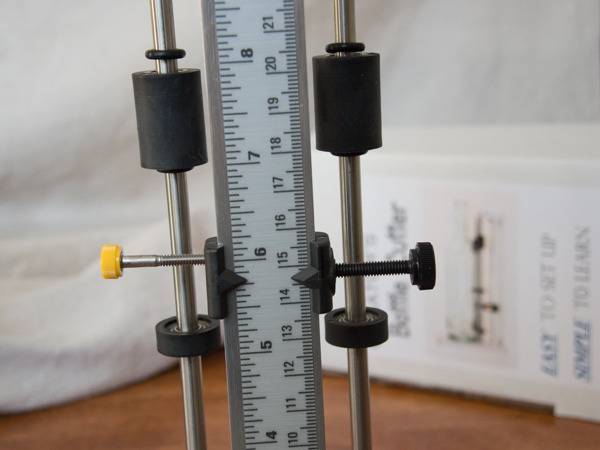
Included is also a nylon (or possibly UHMW) and foam pad to protect your palm. Basically, you’re supposed to put the pad, nylon side down, on the bottle, and place your palm on the foam. This makes the bottle slip easily as you hold it in place.
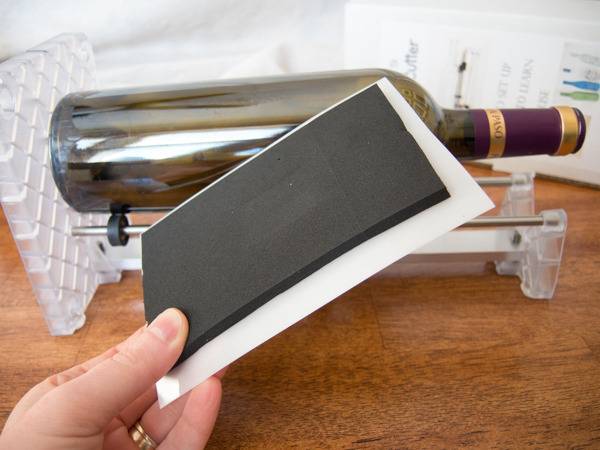
Another thing to note is that the Creator’s cutter itself is spring loaded, so it is pushing up on the bottle as you rotate it–you don’t push down, more like just hold it in place. This feels a little weird at first, but only after using other bottle cutters. If you’re new to bottle cutting, it wouldn’t be an issue.
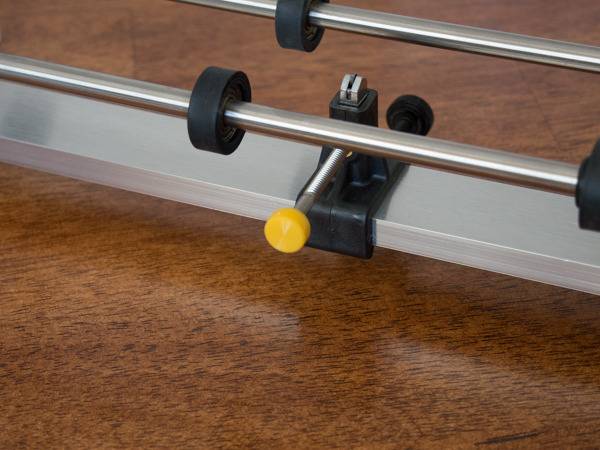
Now let’s get down to business. Here is my first attempt:
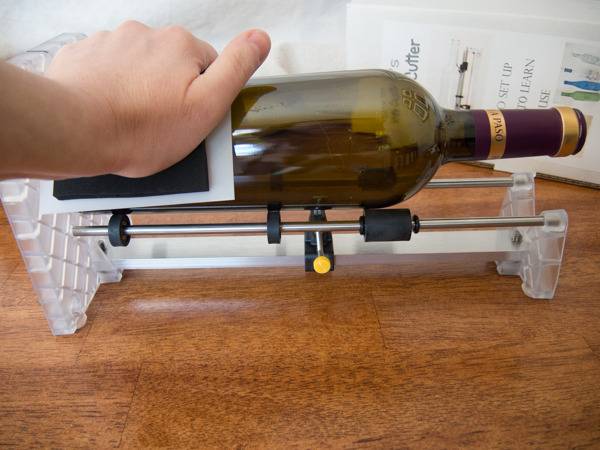
I tried making two different scores at two different lengths on the bottle picture above, but the lines went all wonky. I think it was the nylon pad that did it. Yes, it makes the bottle slip easily as you hold the bottle in place, but it also means the bottle might slip away from the backstop. If that happens, you won’t get an even cut. I didn’t even attempt a separation with that bottle, so I tried another, this time nixing the nylon pad thing. That score was much better.
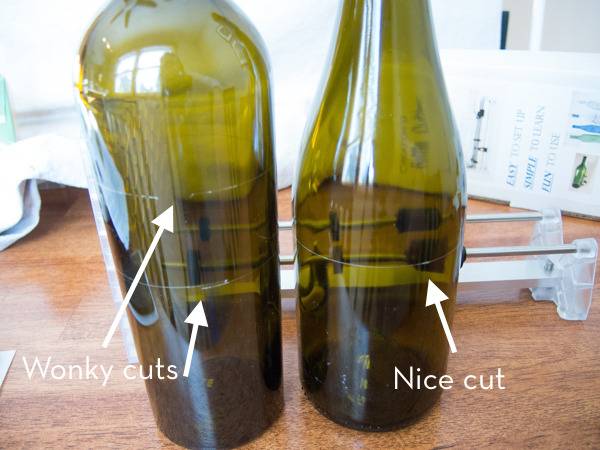
Creator’s suggest either flame/cold water OR hot/cold water baths. I tried the former and it looked like it separated nicely, but….
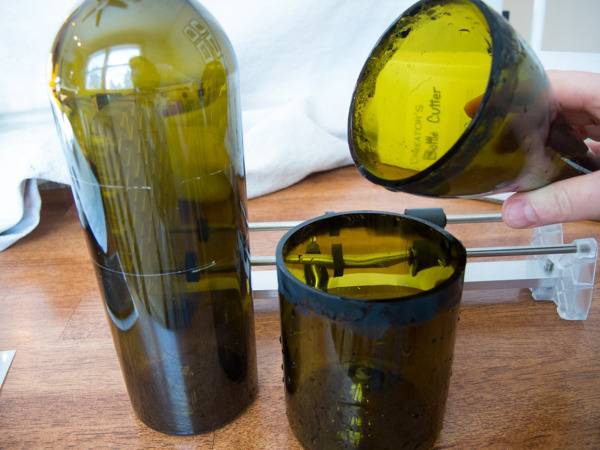
after I cleaned the bottle, it revealed an iffy separation:
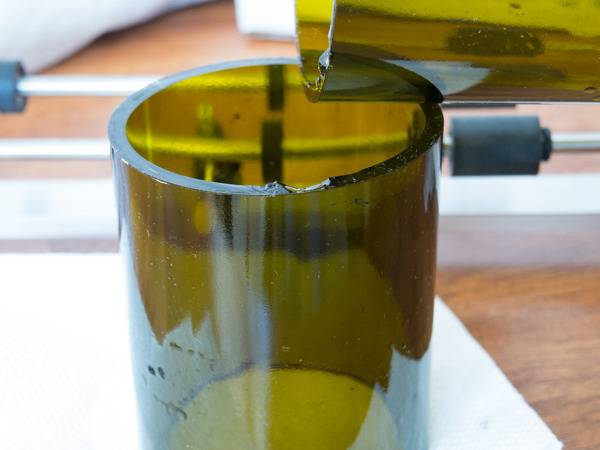
For my fourth attempt at scoring I decided to USE the pad again (not pictured) now that I got the slip-factor under control (you have to rotate and keep pressure on the backstop simultaneously):
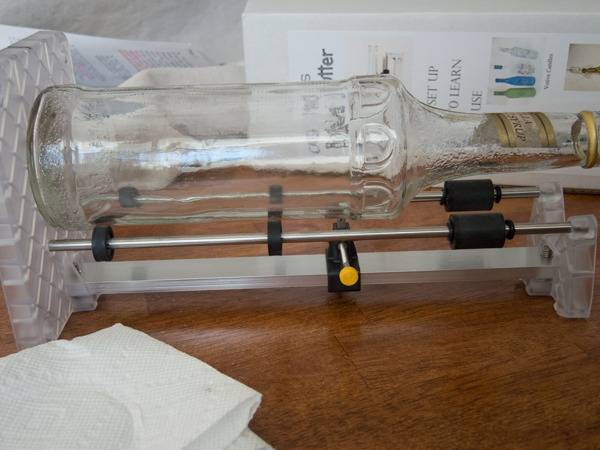
This time I used the hot/cold water method and the two rubber rings that I mentioned earlier to guide the hot/cold water along the score line.
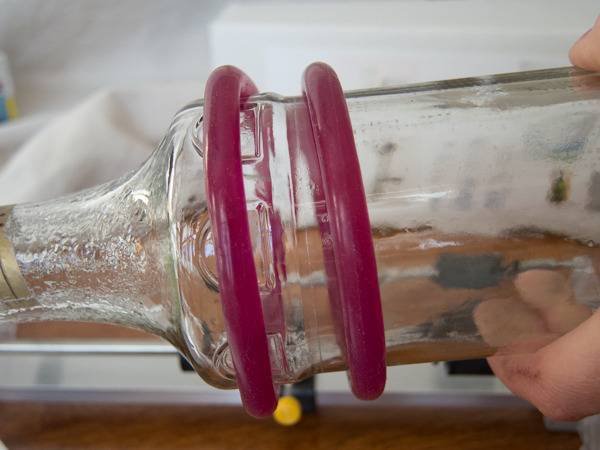
Perfection:
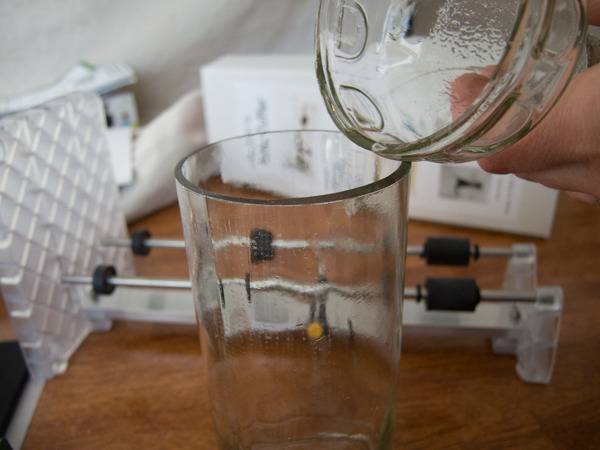
Nice to have:
This replacement cutter wheel for the Creator’s Bottle Cutter is good to have just in case.
The Kinkajou Bottle Cutter
After the folks behind the Kinkajou Bottle Cutter read my roundup, they offered to send out one of their bottle cutters for me to add to the review. I’m going to nut shell it, so here goes…
The unit itself is bigger and heavier than expected (not necessarily a bad thing). It came with sanding paper, a ‘glass finishing tool’ (to pry off jagged edges left on after separation, which I’d never do, because if you get an even cut, you should never be left with jagged edges), stretchy separation rings, and a bunch of stickers (!)
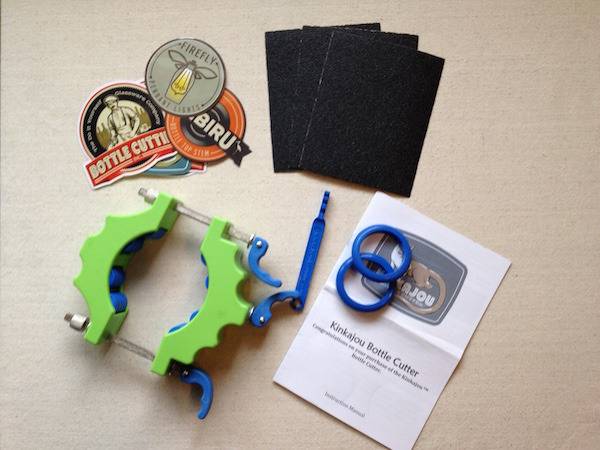
Using the Kinkajou isn’t all that difficult, just slip it over a round bottle, adjust the two outside screws to fit it around the bottle, then engage their accompanying levers. To score, engage the cutting wheel lever and spin the bottle until you have a score line around the entire bottle. Sounds easy, right? It is…IF YOU WATCH THE HOW-TO VIDEOS ON THE KINKAJOU WEBSITE. Otherwise, you’ll make one wonky cut after another. Even then, you need to finesse this thing. The problem is you can’t apply any torque whatsoever with your hands. Doing so will result in a bunch of uneven cuts. Like this one:
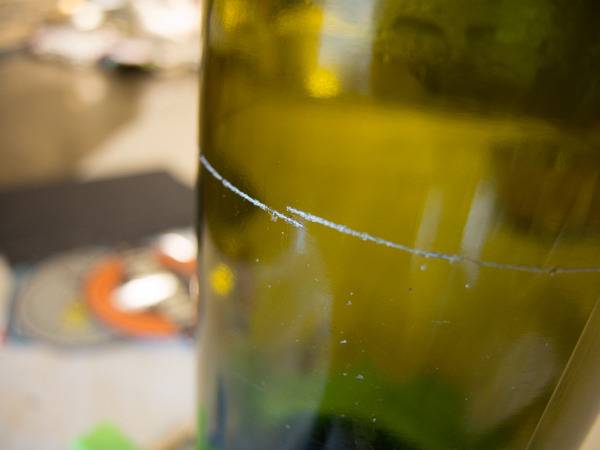
Once you get the hang of it though, it’s fairly easy to get an even score line.
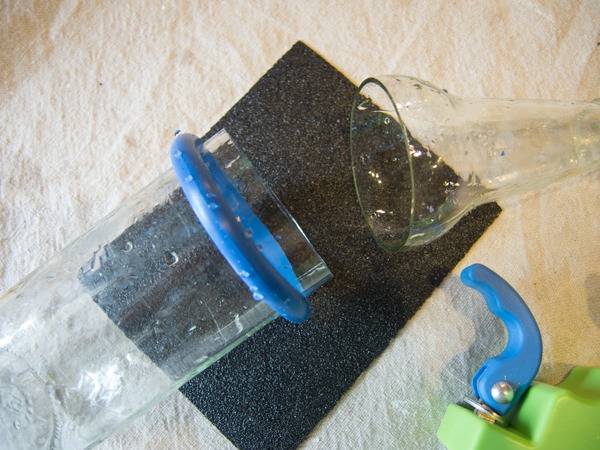
However, if you plan to cut even a slightly square bottle or jar, like the one below, forget about it. The cutter gets hung up on the angles and won’t spin.
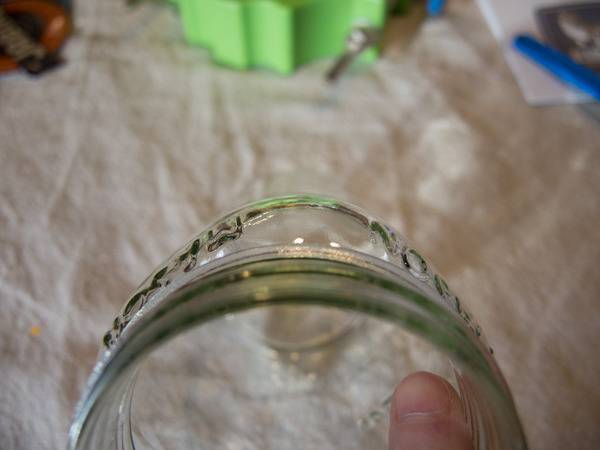
Hung up on the edges:
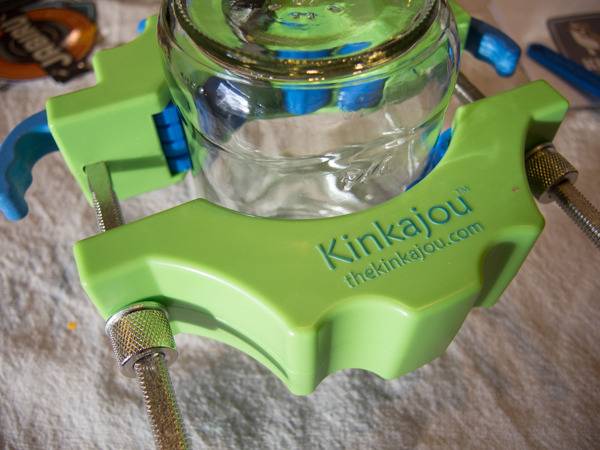
There are things I do like about the Kinkajou. Its construction allows for easy visibility of the cutting wheel, which is great. I also like the pliability of the separation rings, which are much stretchier and therefore easier to use than those that accompany The Creator’s. But…..that’s about it, I’m afraid. I just can’t get over the torque issue. It’s too unpredictable for me. And then there’s the whole ‘not even slightly square bottle or jar’ thing. For more predictable cuts and for versatility in bottle shapes, I’d go for the Ephrem’s for a bit less in price. Grade-wise, I’d give the Kinkajou a B, and that’s for round bottles only. GRADE UPDATE: Murray commented how the Kinkajou won’t score a level line on a slightly slanted bottle either, so for that reason, I’m going to lower my grade to a C.
The product review unit was provided by Kinkajou. All opinions are mine.
Conclusions
Works but it might be an exercise in futility trying to maintain consistency. Again, the makers say you can cut on a slant, but that proved to be easier said than done. And as for wide-mouth jars? SUPER tricky. Unlike the other cutters in our competition, it does have gravity going for it, which means the bottom of the bottle doesn’t creep up like it can on a horizontal bed. For an occasional, straight-forward WINE bottle score, it’ll do the job. Although frustrating, it did, eventually, make a nice score. Ultimately, I could see the price making up for the frustration to the user. I’m giving the G2 a wobbly C- for wine bottles only. (And because that part fell off.) For wider-mouth bottles and jars, I’ll give it a D, only because there’s probably a way to get a successful score if you have a lot of time and patience.
A respectable, well-made bottle cutter that does the job nicely. Because the makers have disappeared and have, possibly, gone out of business, the cutter will only be found secondhand, which may mean a discount from its original $50 price tag. If so, I’d buy it. As for a grade, I’d give it a B if the company were still in business. Because they’re not, it might be best to do the pass/fail route. In this case: PASS.
A serious contender for both price and performance. Besides those 3 cutting wheels, you get the other thoughtful adders like the emory cloth, sanding compound, and candle. Okay, you can’t score a bottle on a slant with it, but they do offer that $6 adder that I mentioned earlier. And, yes, there is a limit to the lengths of cuts, but they also offer a $4.50 extender to deal with that. So, for about 10 more bucks, you’d have everything you could need, assuming the slant adapter works as well as the entire unit does. For the bottle cutter hobbyist, I’m giving this little guy a solid, and surprising, A+. (The + is because of the perfect cuts right out of the box.)
Once you get the hang of it, I feel it will be the most consistent in cutting lengths of all the products in this shootout. The integrated ruler on the back will get precise measurements for your cut lengths, and is a necessity if you plan to cut RINGS. Downsides of the unit are 1. it only comes with one cutting wheel and 2. it doesn’t cut on a slant. The wheels are replaceable, of course, but for the slant–there isn’t an adder for that. However, Creator’s offers a bottle ‘neck cutter’ for $50 that looks rather enticing. Ultimately, I’d suggest the Creator’s for for those of you who intend to start a cottage industry involving bottle-cutting. For a grade, Creator’s gets an A.
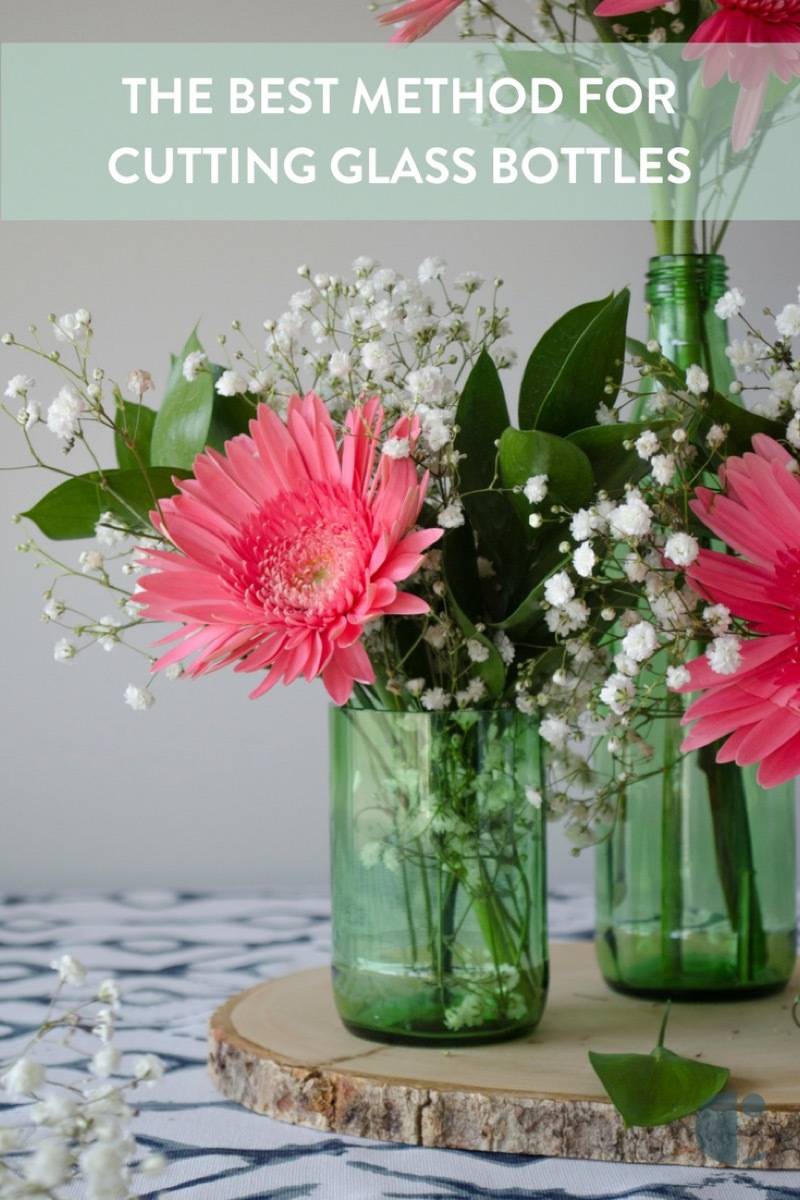
FINAL NOTE:
None of the retailers of these bottle cutters supplied products for this review. It was entirely funded by Curbly. As for the opinions of the products, those are mine and mine alone. If anyone has any further questions about the individual products reviewed, I’ll do my best to answer them for you. Just ask in the comments below.
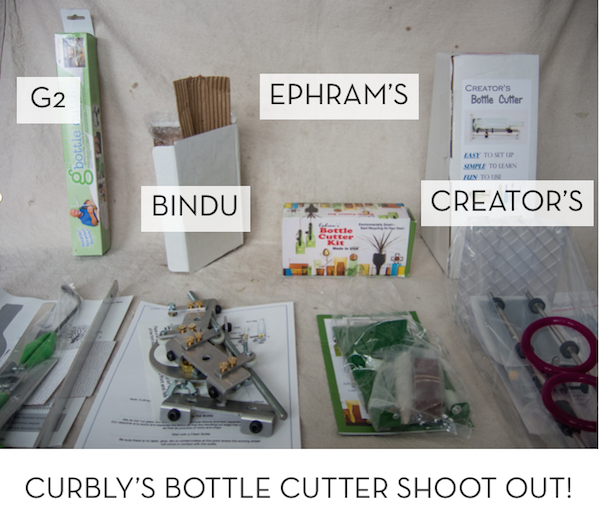
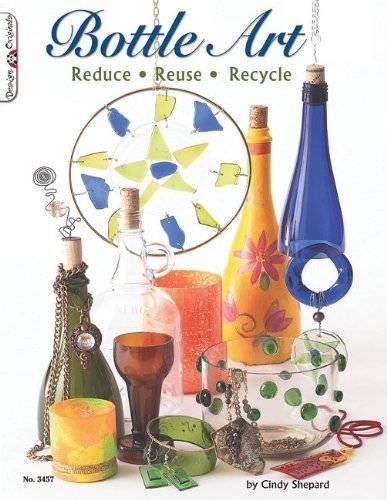
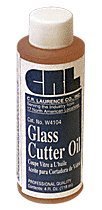
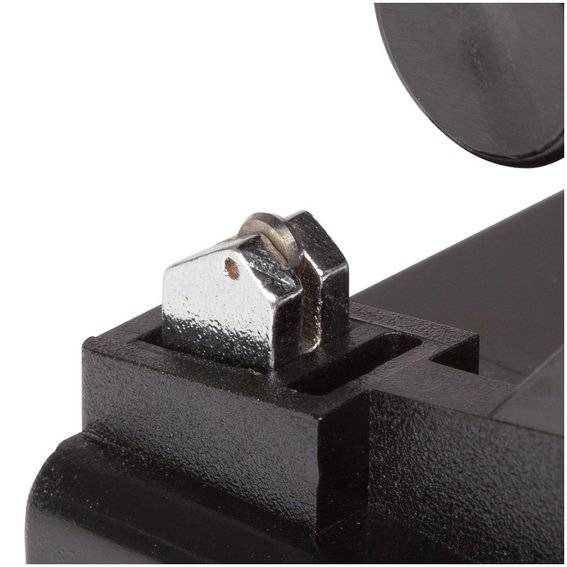
I can’t help but notice that you are missing the Kinkajou Bottle Cutter in your comparison.
@Anon–It was on the list to consider, but we were operating within a budget, so we had to draw the line somewhere. I does look like an interesting cutter, but its versatility made us wary. It seems like it would only cut perfectly round bottles, thus making it a “one trick pony.” The better cutters on this list in the same price range all cut square-ish bottles, like the Starbucks bottle I did. If anyone can confirm or dispel the notion that the Kinkajou only works on perfectly round bottles, that would be great!
Thanks for reviewing those cutters. To be fair and objective, I recommend completely decoupling the scoring process from the breaking process. There are different levels of stress required to induce a break in a bottle depending on thickness of glass, type of glass, and the position of the bottle (score line) at which you are trying to break. Typically the bottles are thicker at the bottom and thin out along their length. Moreover if the glass wall at the score line is not uniform around the circumference (thicker / thinner around it) you require a different heating profile in order to avoid spider cracks and other irregular breaking. The same cutter placing score lines in different positions on the same bottle will yield very different results on the same bottle unless you have a very controlled breaking process.
Evaluation of the cutter should really include:
– Ability to get a straight score line whose beginning meets its end position with perfect overlap and no divergence
– ability to place a score line anywhere along the bottle’s length especially very close to the bottom
– quality of the score line under 20x or 50 x visual inspection for depth, and discontinuity (skipped spots along the line)
– compostion of the cutting wheel / edge (Silicon Carbide, TunstenC, Steel)
– Estimated or measured # of cuts for the blade’s life
– Ability to cut tapered bottles
– Plus all the items you looked at like assembly, ease of use, shape of bottles, cost, etc
Obtaining a clean continuos score is essential to generating a perfect clean bottle break but even a perfect score line does not guarantee a clean bottle break.
Cheers, Murray
@DIY Maven, I tried two different sized square bottles on the Kinkajou and as you are rotating the fist corner to fall into the space between sets off rollers immediately seizes the motion and the bottle is lock there. Perhaps someone has found a work-arouns but from what I can tell cutting non round bottles is not possible.
Cheers, Murray
C&C Bottle Cutter and the Kinkajou Bottle Cutter are missing in your comparison. Would love to hear about them too.
@Linda–Both the CC and Kinkajou are interesting products. I wouldn’t mind running them through some testing too! It would make a great “Part 2” to this post. 🙂
Thank you, just what I have been looking for, a comprehensive guide for bottle cutting. There are plenty of Youtube guides, but who has time for some of those processes. Good review, I am going to post on my Pinterest account. Appreciate the time, cost and trouble it must have taken to produce this post. Regards Sharron, Norwich, Norfolk, England
@Sharon–You are very welcome! I’m glad you found the review helpful.
I have some great olive oil bottles that are square. Do you have any methods for cutting square bottles?
Also, how would I cut larger diameter bottles, such as gallon and half gallon sizes.
Thanks, this was very helpful. Appreciate your doing the leg-work on this one! I already purchased the G2 for 1/2 off which sounds like a better thing than I thought. But I may get the Ephams as well. If I move onward investing in the Creators is a possibility. New to this craft and your info was a blessing! Cheers
Hi what about the Kinkajou bottle cutter? Is it also good or not?
I have been looking at all the bottle cutters for several months now & even tho I have heard advice from many many people & listened to what they had to say, the only thing that did was confuse me more as to which is the best one.
this review of yours has been extremely helpful, as I have just orered the Ephrem Bottle Cutter from their website.
I thank you for spending the money, taking the time that it took to test each & every one, and for sharing the results on here with us.
Thank You.
@Capernius–You are very welcome.
Hello everybody!! I’ve updated the Best Bottle Cutter Review to include The Kinkajou Bottle Cutter. Scroll down to the bottom of the post for pics and opinions.
Hope it helps in your decision-making, and thanks for all the comments!
DIY Maven
Thank you for this great review. I had difficulty choosing between Kinkajou a Ephrims. But now I now. Thank you so much from South Africa.
You are very welcome, Milly!
In addition to the issues you have pointed out with the Kinkajou on bottles with square and oval corners, I have never been able to make a straight score on tapered bottles. A large % of wine bottles have slight to moderate tapers. The kinkajou rollers are flat and they always try to stay flat against the bottle which means as you rotate it tends to spiral. I work with very expensive bottles and have zero tolerance for error. I shelved the kinajou long ago.
Murray, I didn’t even think of the tapered bottle scenario. With that in mind, I’m going to lower my grade to a “C.” Thanks for the input!
Good Day DIY Maven. We listen to our customers and we respond. Our separating rings are now more pliable. We went with a lower durometer. (35A). A lot of people try to stretch the ring and then put it on the bottle. That is not so easy. If you roll the rings down the bottle, they go on very easily. Thank you for your in-depth reviews. We always strive to make the best better. Your friend, Ray Nicholas President-Creator’s Stained Glass
I have been using the G2 and have done around 200 wine bottles for lanterns. It is wearing out and I am debating what kind to get now. I have a friend that wants shot glasses made by cutting beer bottles at the neck. None of these appear to be friendly to cutting at the narrow section the bottle. Do you have any suggestions??
Carol. The Creator’s Bottle Neck Cutter is your answer.
Is it possible to cut beer bottles or bottles of 33 cl (I think of the Savanna-bottles, a South African primium cider) with the Ephrem’s bottle cutter?
And can i buy the cutter in Belgium?
Thanks
You can buy anything on ebay! I think most sellers ship international but be sure to check price. I was warned not to do beer bottles because it is a different type of glass – because of heat processing. I just recently tried a few and had 50-50 luck with a clean cut and getting cracks up the bottle. I was using the G2 and hot water/ice water dipping.
Hi,
Is there any different between the Kent and the Ephrem bottle cutter. On the internet, they look the same?
@Kris–I haven’t seen a comprehensive review of the Luca yet. If they’d send me one, I’d gladly add my findings to this post. 😉 Think they read these comments??
@Els–I’d never heard of the Kent before reading your comment. They certainly DO look alike, but unless I had one in my hands, I couldn’t comment on its performance in comparison to Ephram’s. As far as manufacture, Ephram’s in made in the U.S., Kent is made in China.
I don’t mean to pull this thread off on a tangent but I thought I would share what I came up with as the best process for cutting glass bottles. It gives me a way to achieve perfect straight cuts with perfect yoeld 100% of the time. It uses no boiling water, no flames, torches, or combustible gases or liquids. I put together a video and posted the link below. Just one disclaimer: I used Creator’s Bottle Cutter in the video because it has worked best for me in my work. If you are tired of reading about bottle scoring devices you can skip the first 3 mins of the video.
Cheers, Murray
Please send me the link for that video on the separation technique you,ve been using.
Thanks,
Steve
I`m truly amazed by the C&C Bottle Cutter. Works like a dream.
Yet would be happy to try the other bottle cutters as well 🙂
Hi are you able to review the Luca and C and C, both look simillar, cant decide between those and the Ephram. Got the g2, and as predicted, 1 out of 10 bottles were barely usable, more the amber than green for some reason green seams more brittle.
Thanks for your reviews, really helpful, although wish i’d seen them after spending 2 hours assembling the g2!!
Murrays bottle cutting technique was great. I went back to review video and the video is private now. I has hoping he’d be willing to repost one that isn’t private. I bought the items needed and have done bottles I wanted to try to cut. Thanks!
Hey! THANKS for this!!! This was exactly the comparison test I was hoping someone had done. Really appreciate it.
Kudos on the head to head match-up. I have Ephram’s cutter and love it. It gives consistent and even score lines (both in depth and matching the beginning and ending).
I have been cutting bottles for about two years. While scoring of the bottle is important, proper stressing of the score line is also important.
I used to be very impatient and try to get the bottle cut in two or three passes on the candle. And my success rate was about 50% (terrible).
I eventually realized that successful stressing requires patience. I didn’t need to overly heat the score line. I needed to evenly apply small amounts of heat, then cool. But do it over more rounds of heating and cooling.
Now I take my time and do many passes with heating and cooling. While it may take longer, it insures that the stressing is more likely to follow the score line.
Another benefit is that the eventual cut line is very even, and, in my experience, not sharp or dangerous. Because of this, it also requires less sanding.
Once I learned some patience, my success rate has gone to about 99%.
I am looking to cut crystal decanters. Would Creator’s or Ephrem’s work on lead crystal?
I’ve reviewed a few of the same bottle cutters myself and would agree with all the grades that you handed out. Although I thought you were being generous with the ‘D’ for the g2. It reminded me of when Tommy Boy got excited and claimed that he ‘passed!’. Great round-up of all the different bottle cutters available.
Thank you for all the detailed information. I have been looking at some of the square bottles (mostly from Bourbon makers) and thinking that those bottles could be very interesting vases or light fixtures. I have never cut a bottle before and will probably purchase your A+grade Ephrem’s because of the angle/slope on some of the bottles I like best. Thanks again!!
I want to just cut the bottoms off of wine bottles or smaller sized bottles like a Worcestershire bottle. I want not more than an inch of the bottom. Are any of these cutters capable of that?
Thank you in advance for your reply.
i bought an Ephrems and have spent all day with out success. i used the candle and ice cold water as i didnt have ice cubes. no luck, the bottles didnt even seperate. i tried puttong the bottles in the deep freeze to get them cold but no luck. so the trick must be in the ice cube? i also tried the cold water…boiling water baths. no luck!! feeling frustrated
Thank you so much for this article!! I have the G2 and am ready to move onto greener pastures. I’m going to get the Ephrem cutter. Thank you!
Can you recommend the best cutter for large bottles like the big Pendleton Whisky bottles? I’m having the hardest time finding anything about cutting the larger bottles. Thanks!
Hola buenas tardes quisiera saber cuál de las máquinas es la más eficiente y fácil de ocupar